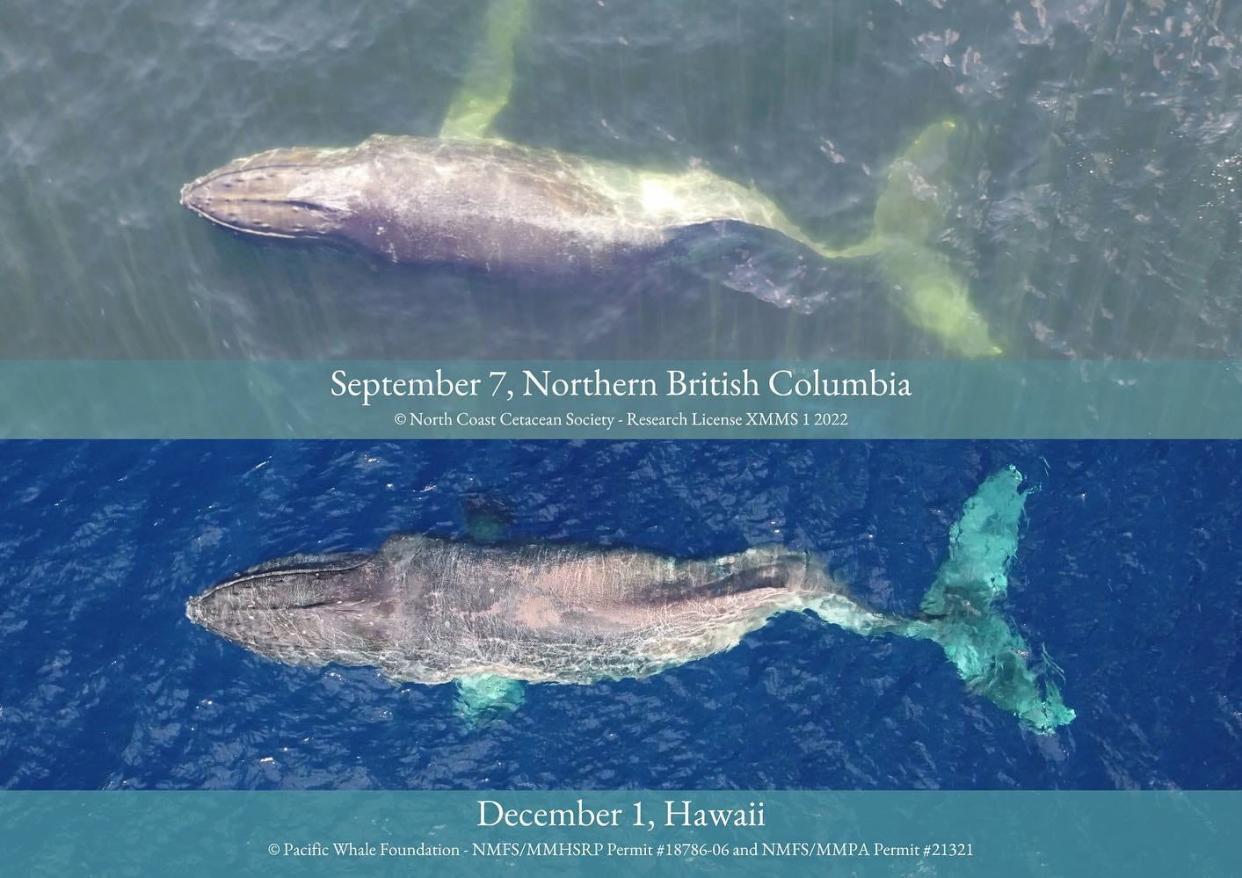Moon, a doomed humpback whale with a broken spine, travels 3,000 miles doing breaststroke

In "considerable pain," a determined humpback whale tracked by researchers for more than a decade, recently finished swimming more than 3,000 miles from Canada to Hawaii – all with a broken spine.
Moon, a lone humpback whale, traveled from British Columbia to Maui with a severe spinal injury from a vessel strike, according to a post the nonprofit research group BC Whales shared on Facebook.
The whale was spotted in waters near the Hawaiian island Dec. 1.
She was immediately identified because of her contorted body which researchers said is due to it being struck by a vessel.
Every September for the past decade, researchers at Fin Island research station in Gitga’at First Nations territory spotted Moon in the coastal waters to feed on krill.
In 2020, researchers said they were elated when she appeared with a calf, passing on the tradition of migrating between feeding and breeding grounds to her offspring.
But in September, researchers noticed something different.
"The harrowing images of her twisted body stirred us all," BC Whales posted Thursday on Facebook. "She was likely in considerable pain yet she migrated thousands of miles without being able to propel herself with her tail."
The whale's journey left her emaciated and covered in whale lice as a testament to her severely depreciated condition, researchers said.
"This is the stark reality of a vessel strike, and it speaks to the extended suffering that whales can endure afterwards," they wrote. "It also speaks to their instinct and culture: the lengths whales will go to follow patterns of behavior."
'Just breaks your heart'
Janie Wray, the CEO and lead researcher for BC Whales, told The Guardian that Moon's injury meant the whale had to swim differently to finish her journey.
"Without the use of her tail, she was literally doing the breaststroke to make that migration. It's absolutely amazing," she told the outlet. "But it also just breaks your heart."
Attempts to euthanize Moon, Wray said, would require "a cocktail of toxic substances" and risk poisoning the marine life that would feed off her remains.
“If she was on land, we could intervene," Wray told the outlet. "But because she’s in the ocean, and because of her size, there is nothing that we can do. And that just breaks your heart even further into pieces.”
3 bald eagles die: Eagles die, 10 sick after eating carcasses of euthanized animals
Shark attack?: Hawaii officials search for woman missing after shark sighting
Wray could not immediately be reached for comment by USA TODAY.
According to the National Oceanic and Atmospheric Administration, marine animals can be difficult for a vessel operator to see because they are not always visible from the surface. Even if the operator sees the animal clearly, there may be no time for either of them to avoid a collision.
Endangered North Atlantic right whales are especially vulnerable to vessel strikes because their habitat and migration routes are close to major ports and often overlap with shipping lanes, the administration said.
Speed limits in the ocean?: Massive ships are killing endangered whales each year.
A devastating end
Researchers said that Moon's current condition will not allow her to survive the return to Canada.
"Tenacity & Tragedy. Moon ... will not make it back," they said. "We will never truly understand the strength it took for Moon to take on what is regrettably her last journey, but it is on us to respect such tenacity within another species and recognize that vessel strikes lead to a devastating end."
For more information about vessel strikes visit www.seeablowgoslow.org or www.fisheries.noaa.gov/insight/understanding-vessel-strikes.
Natalie Neysa Alund covers trending news for USA TODAY. Reach her at nalund@usatoday.com and follow her on Twitter @nataliealund.
This article originally appeared on USA TODAY: Humpback whale swims 3,000 miles with broken back - Canada to Hawaii

